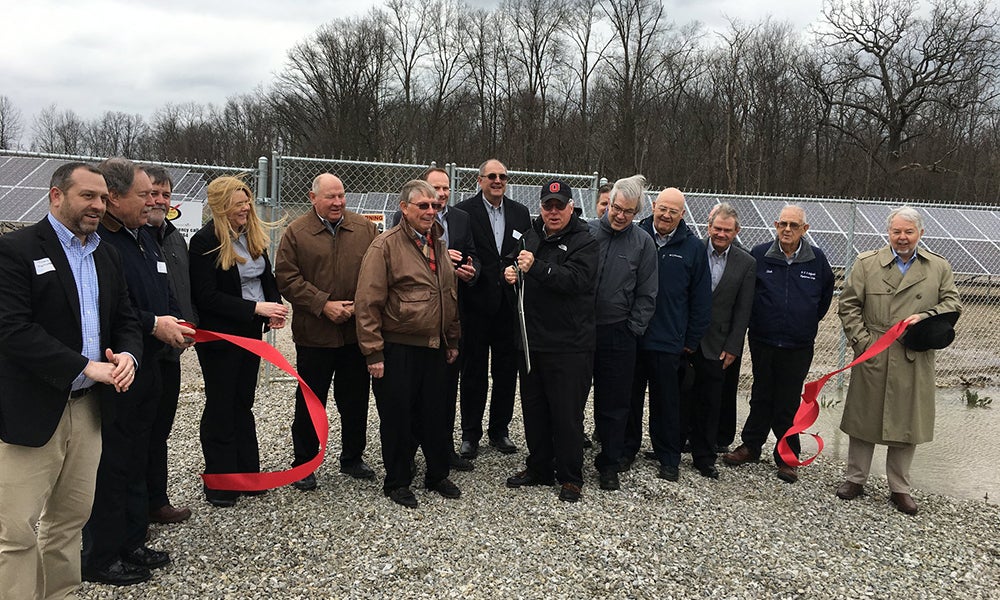
Buckeye Power and its 24 member co-ops are committed to safe, reliable, affordable, and economically sustainable power production that is also environmentally responsible.
Ohio’s co-ops take a balanced approach to renewable energy. While we continue to support and utilize affordable coal-fired generation for the bulk of our power, Buckeye Power and its member cooperatives have made significant investments in renewable energy on behalf of Ohio co-op families.
OurSolar
4.76 megawatts of solar energy
Buckeye Power has installed solar energy arrays at 24 locations throughout Ohio for the OurSolar community solar project. Individual sizes range from 25 kilowatts to more than 2000 kilowatts. Local member cooperatives may offer subscriptions to these solar farms as an alternative source of generation. These subscriptions provide direct access to solar generation to electric consumers who otherwise may not have the means or ability to have their own rooftop systems.
Anaerobic digesters at livestock farms
4.45 megawatts from biogas projects
Buckeye Power purchases the excess generation from animal waste anaerobic digester systems at four locations across the state. Bacteria break down the manure produced at these pork and poultry operations to create the methane gas used to fuel engine-and-generator sets. Power flows onto the grid via interconnections with the member systems Consolidated Cooperative and Midwest Electric.
Gas generation at landfills
9.6 megawatts of methane generation
Buckeye Power receives methane-produced power from the Hancock County Landfill and Suburban Regional Landfill (in Perry County), using interconnections provided by Hancock-Wood Electric Cooperative and South Central Power.
Hydropower from upstate New York
55-megawatt entitlement
Buckeye Power began receiving attractively priced hydropower from the New York Power Authority (NYPA) in 2004. NYPA is the largest state-owned power organization in the nation and a not-for-profit provider of generation to electric cooperatives, community-owned electric systems, and private utilities. Power comes primarily from the Niagara (90 percent) and St. Lawrence rivers.





